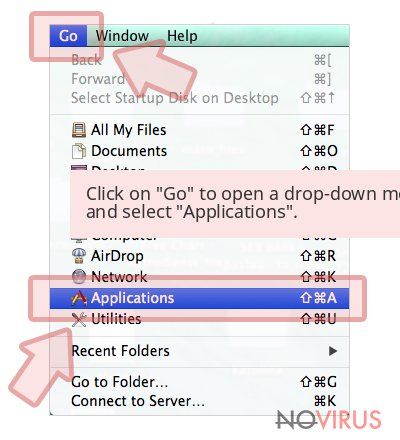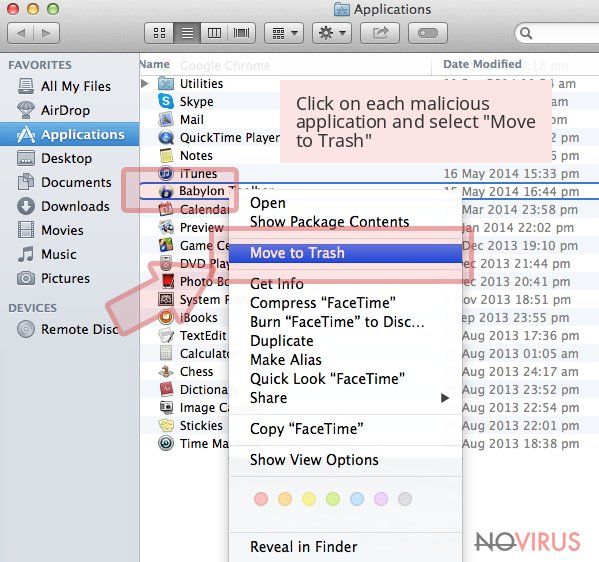Remove Yoursites123 (Virus Removal Instructions)
Yoursites123 Removal Guide
Description of Yoursites123
Why you should instantly remove Yoursites123 virus:
If you are considering to use Yoursites123 virus, keep in mind that it is not a good idea. Why? Simply because this search engine is a browser hijacker, which targets your browser and modifies the browser settings. It can replace your homepage and then lead you to a bunch of other unwanted effects. Beware that Yoursites123 is capable of corrupting your search results. After analysing it, IT specialists have concluded that Internet users should not keep the application on their system, especially if they think that their private information is important to them. If you accidentally installed the program, make sure you remove Yoursites123 virus.
In fact, some users have been persuaded into downloading this browser hijacker to their computers since it seemingly offers superb browsing speed and most relevant search results. However, these clams are false. Yoursites123 and its alternative Yoursites123.com are potentially unwanted programs, which may interrupt you with diverse pop-ups trailing you in every visited website. They will try your patience by covering partially or fully the online content. Though most of users might try cancelling the emerging ads, some might be tempted to click on them due to their appealing design. We discourage from doing this, since Yoursites123 ads are purely pay-per-click ads that bring real income for the developers of such advertisements. Besides, there is no guarantee that these ads do not promote malicious programs. You should also be careful dealing Yoursites123 redirect issue that may invite you to questionable web sites. Please, try keeping the distance from them because they may inhabit highly dangerous viruses and spyware. If you want to protect your system from getting hijacked or keep your personal files from being encrypted, avoid curiously peeking in those websites. To stay safe, run a full system scan with FortectIntego and perform Yoursites123 removal from the system.
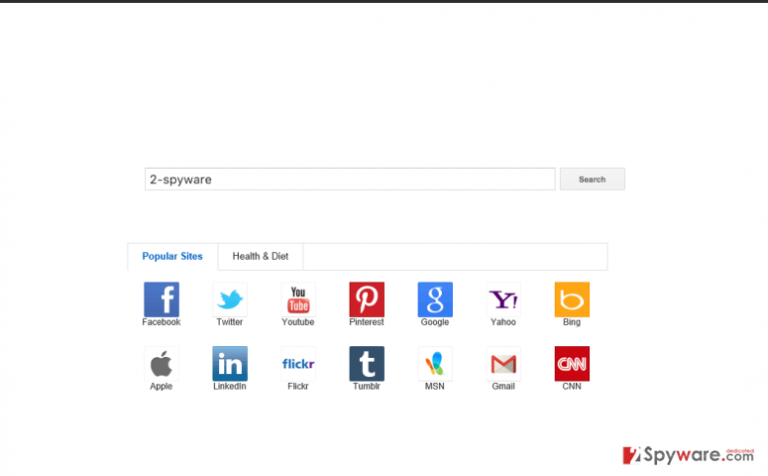
So how does Yoursites123 hijack happen?
Have you recently downloaded a new application? Then you have the answer how this potentially unwanted program tiptoed to your computer. In case, you still don’t recall the moment the malware was installed, try to remember whether there were any add-ons. It is common fault to select ‘Basic’ installation mode and recklessly click on ‘Install’ button. Scammers exploit this users’ vice and place the vicious attachments under the mentioned installation settings. That is why we encourage users to opt for ‘Custom’ installation mode and watch for the pre-marked add-ons.
The main reason why we don’t recommend keeping them on the system is their capability to collect anonymous information. According to the Privacy Policy of Yoursites123 virus, it collects such information as IP address, browsing history, search preferences, the data of your operating system. The collected log files are kept in order to ‘improve our products, offer you more relevant search results and ads, protect our users and products, and identify and block malicious uses of our products. If you contact Yoursearching.com, we may keep a record of that correspondence and we may collect your e-mail address.’ However, the Policy does not guarantee that the compiled data is not shared with third parties. Additionally, while the browser hijacker resides on your system, do not forget that personal information you intentionally type online might be accessed by the developers of this malware. Obviously, there are enough reasons to remove Yoursites123 from the system ASAP.
Quick Yoursites123 removal
As you can see, Yoursites123 is a seriously questionable tool that cannot improve your browsing experience. We highly recommend using well-known search engines instead of such hijackers as this one. However, if this program is already disturbing you with its redirects, there are two ways to confront the browser hijacker. You can remove Yoursites123 virus either manually or automatically. If you opt for the first option, make sure you eliminate the hijacker according to the guide provided by cyber security specialists. Regarding the difficulties which might arise from completing manual instructions, we suggest installing one of anti-spyware programs given below. These programs can remove Yoursites123 and other similar malware in a short time. Thus, it is an effective and a necessary application which should be maintained along with the primary anti-virus software.
You may remove virus damage with a help of FortectIntego. SpyHunter 5Combo Cleaner and Malwarebytes are recommended to detect potentially unwanted programs and viruses with all their files and registry entries that are related to them.
Getting rid of Yoursites123. Follow these steps
Uninstall Yoursites123 in Windows systems
Terminate suspicious programs from Windows 10/8 machines by following these instructions:
- Type Control Panel into Windows search and once the result shows up hit Enter.
- Under Programs, choose Uninstall a program.
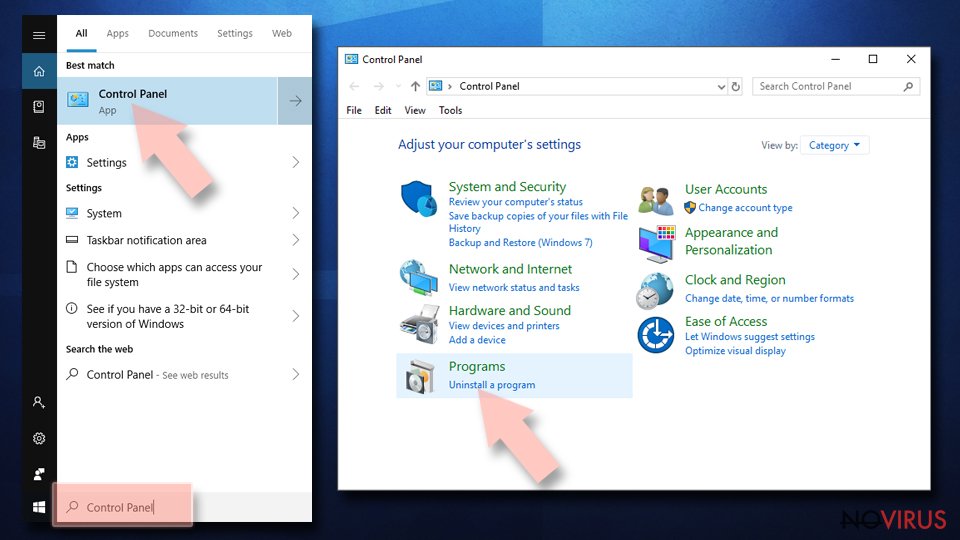
- Find components related to suspicious programs.
- Right-click on the application and select Uninstall.
- Click Yes when User Account Control shows up.

- Wait for the process of uninstallation to be done and click OK.
Windows 7/XP instructions:
- Click on Windows Start and go to Control Panel on the right pane.
- Choose Add/Remove Programs.
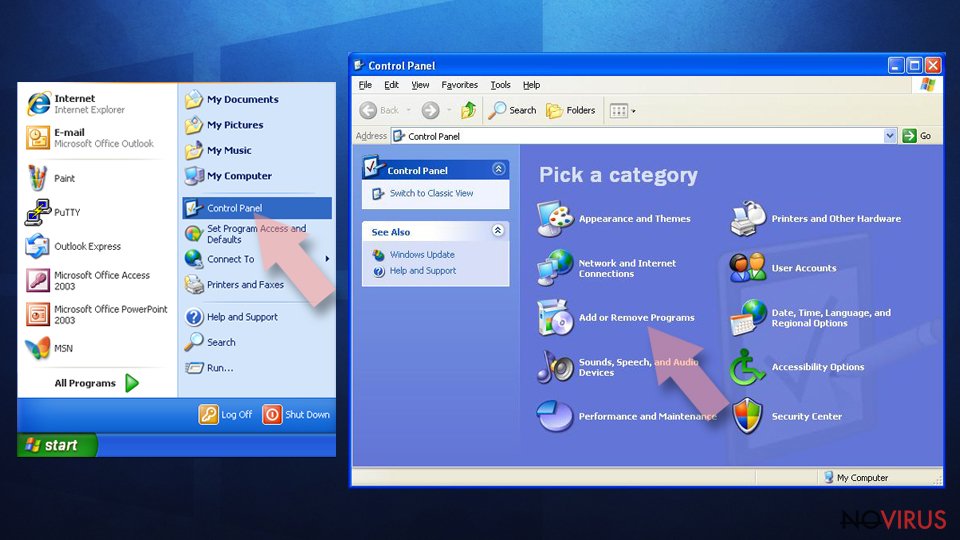
- Select Uninstall a program under Programs in Control Panel.
- Click once on the unwanted application.
- Click Uninstall/Change at the top.
- Confirm with Yes.
- Click OK and finish the removal.
Uninstall Yoursites123 in Mac OS X system
-
Users who use OS X should click on Go button, which can be found at the top left corner of the screen and select Applications.

-
Wait until you see Applications folder and look for Yoursites123 or any other suspicious programs on it. Now right click on every of such entries and select Move to Trash.

Delete Yoursites123 from Microsoft Edge
Delete suspicious extensions from MS Edge:
- Go to the Menu by clicking on the three horizontal dots at the top-right.
- Then pick Extensions.
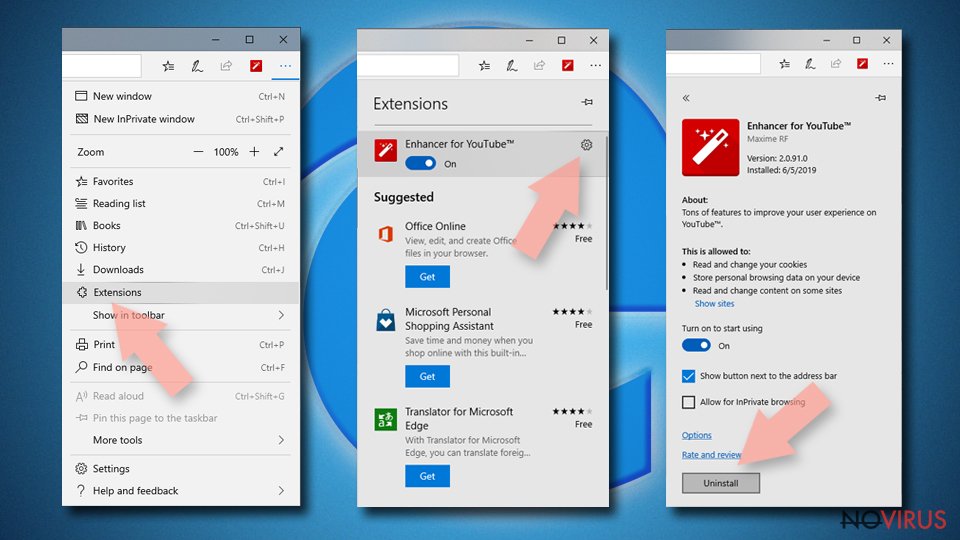
- Choose the unwanted add-ons on the list and click on the Gear icon.
- Click on Uninstall at the bottom.
Clear cookies and other data:
- Click on the Menu and from the context menu select Privacy & security.
- Under Clear browsing data, select Choose what to clear.
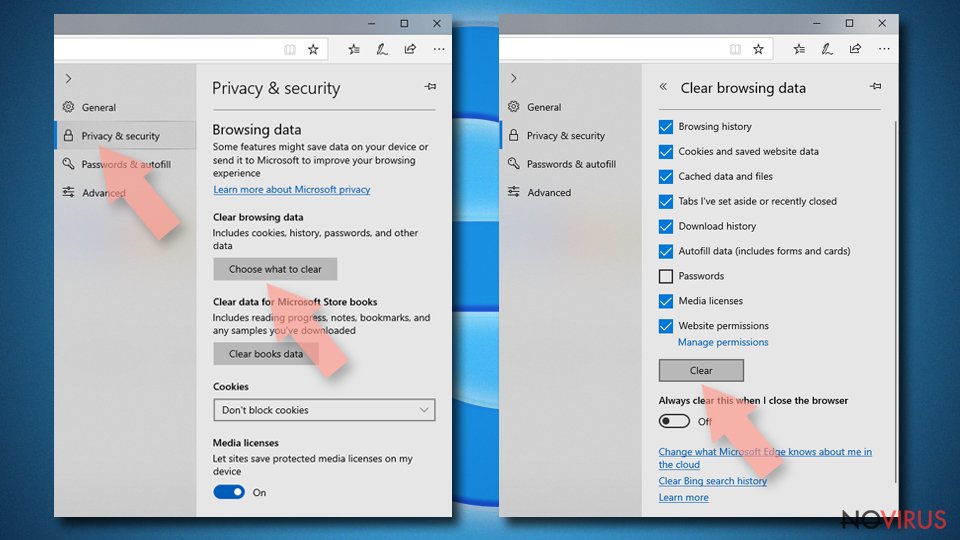
- Choose everything except passwords, and click on Clear.
Alter new tab and homepage settings:
- Click the menu icon and choose Settings.
- Then find On startup section.
- Click Disable if you found any suspicious domain.
Reset MS Edge fully:
- Click on the keyboard Ctrl + Shift + Esc to open Task Manager.
- Choose More details arrow at the bottom.
- Go to Details tab.
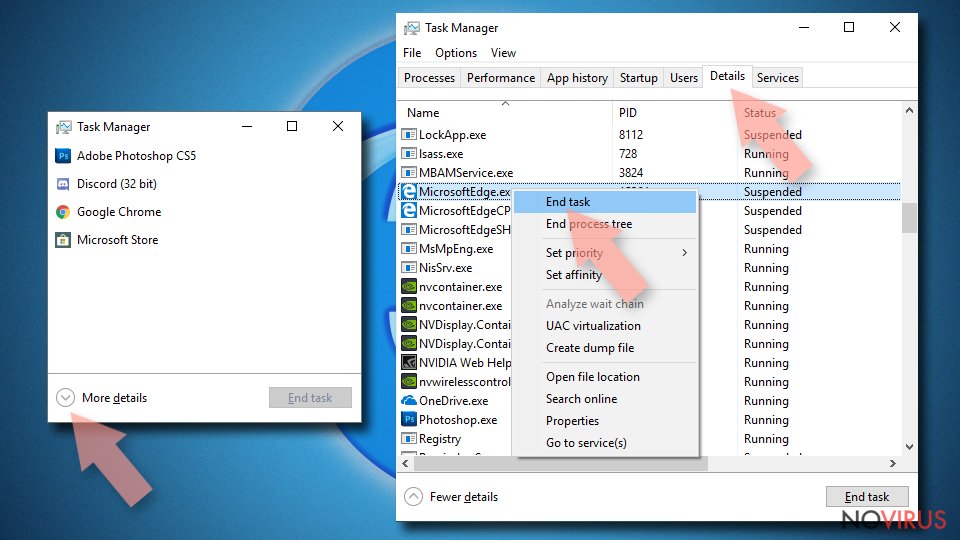
- Now scroll down and locate every entry with Microsoft Edge name in it.
- Right-click on each of them and select End Task to stop MS Edge from running.
When none of the above solves the issue, you might need an advanced Edge reset method, but you need to backup your data before proceeding.
- Find the following folder on the PC: C:\\Users\\%username%\\AppData\\Local\\Packages\\Microsoft.MicrosoftEdge_8wekyb3d8bbwe.
- Press Ctrl + A on your keyboard to select all folders.
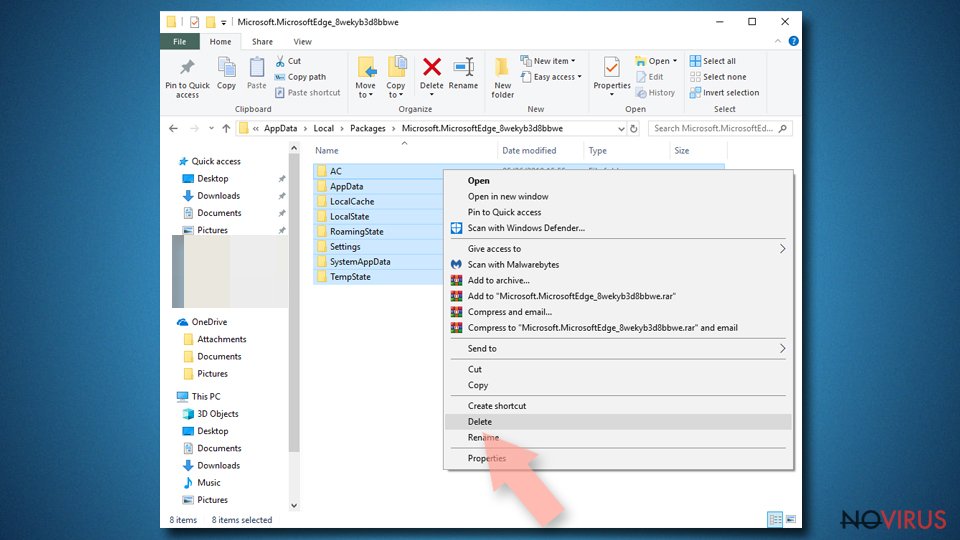
- Right-click on the selection and choose Delete
- Right-click on the Start button and pick Windows PowerShell (Admin).
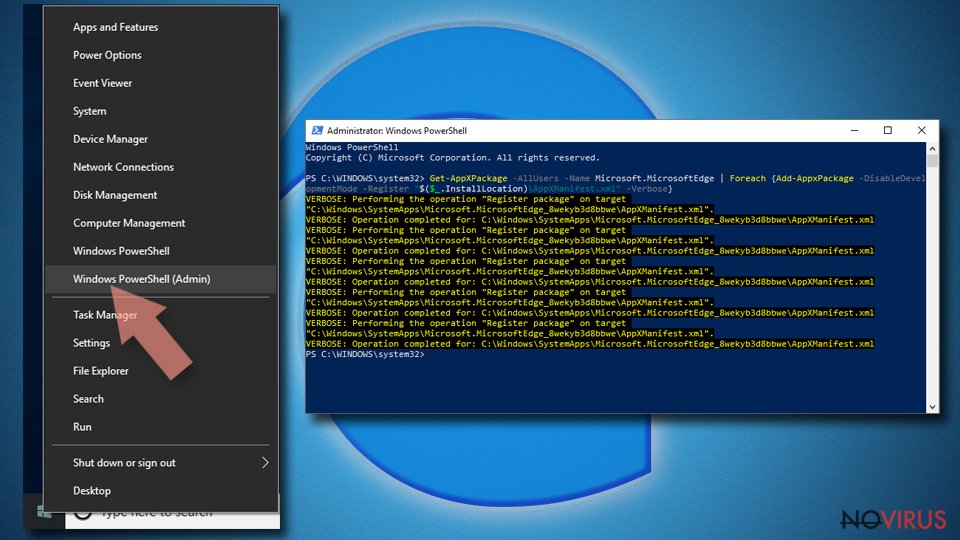
- Copy and paste the following command, and then press Enter:
Get-AppXPackage -AllUsers -Name Microsoft.MicrosoftEdge | Foreach {Add-AppxPackage -DisableDevelopmentMode -Register “$($_.InstallLocation)\\AppXManifest.xml” -Verbose
Instructions for Chromium-based Edge
Delete extensions:
- Open Edge and click Settings.
- Then find Extensions.
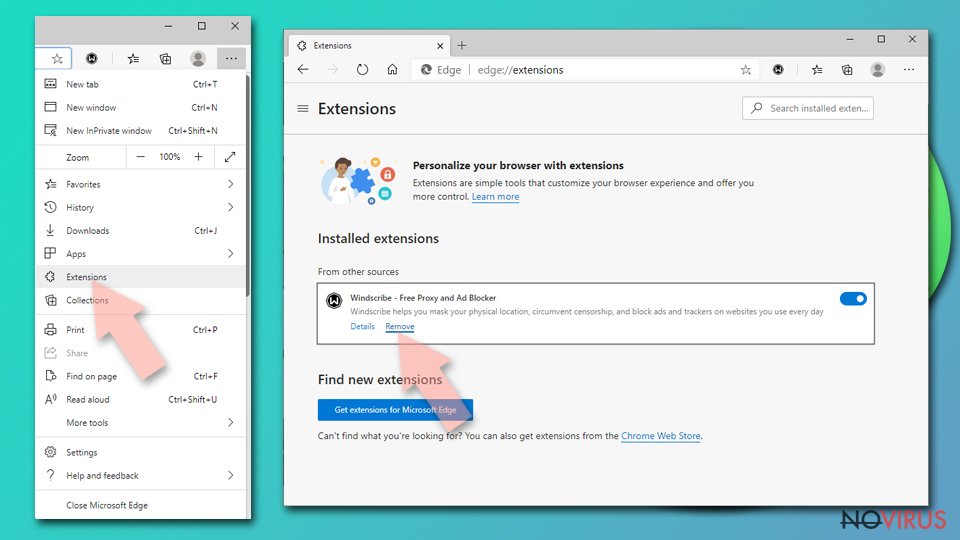
- Delete unwanted extensions with the Remove.
Clear cache and site data:
- Click on Menu and then Settings.
- Find Privacy and services.
- Locate Clear browsing data, then click Choose what to clear.
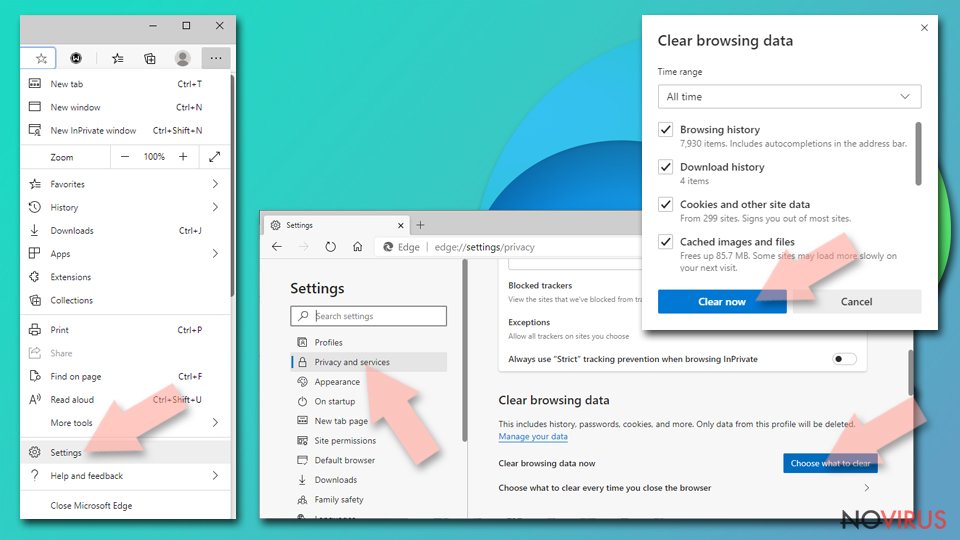
- Time range.
- Click All time.
- Select Clear now.
Reset Chromium-based MS Edge browser fully:
- Go to Settings.
- On the left side, choose Reset settings.

- Select Restore settings to their default values.
- Click Reset.
Delete Yoursites123 from Mozilla Firefox (FF)
Remove suspicious Firefox extensions:
- Open Mozilla Firefox browser and click on the three horizontal lines at the top-right to open the menu.
- Select Add-ons in the context menu.
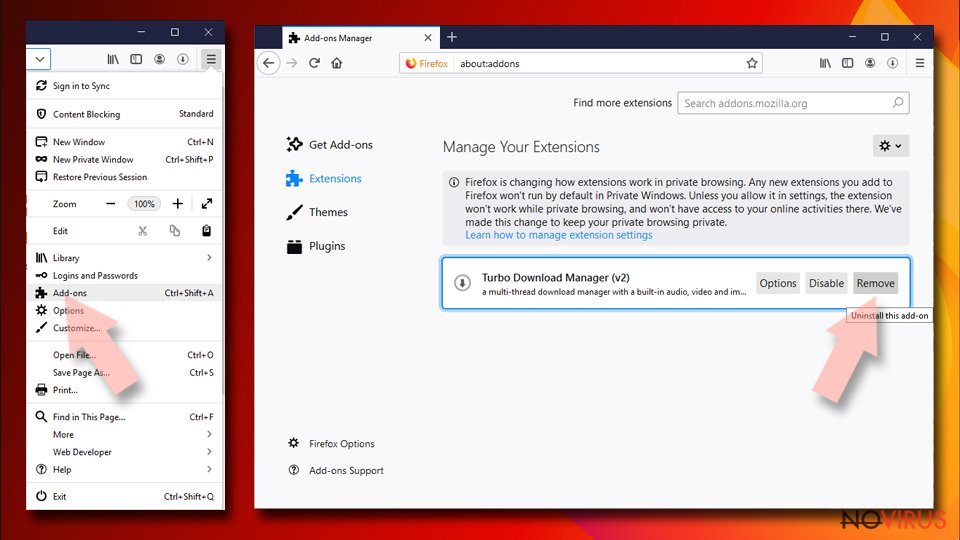
- Choose plugins that are creating issues and select Remove.
Reset the homepage on the browser:
- Click three horizontal lines at the top right corner.
- This time select Options.
- Under Home section, enter your preferred site for the homepage that will open every time you launch Mozilla Firefox.
Clear cookies and site data:
- Click Menu and pick Options.
- Find the Privacy & Security section.
- Scroll down to choose Cookies and Site Data.
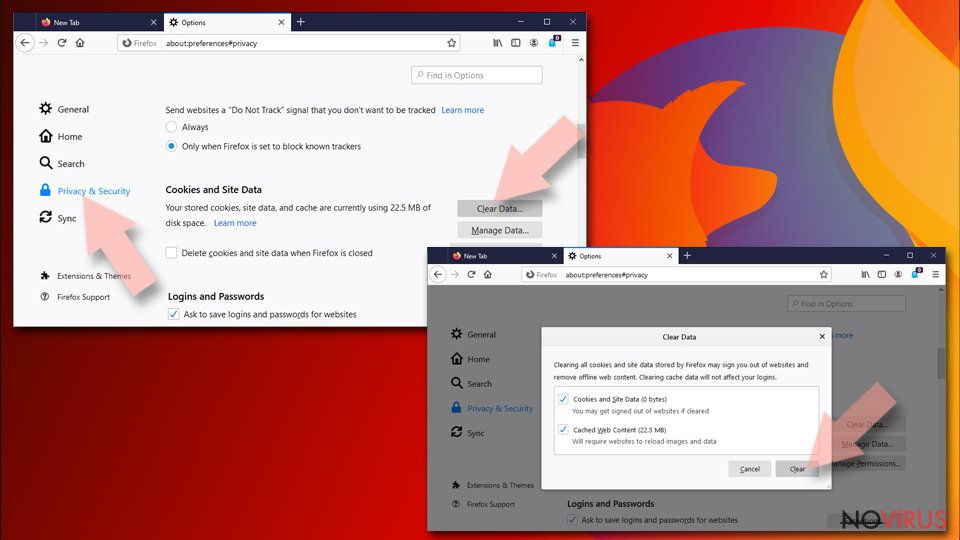
- Click on Clear Data… option.
- Click Cookies and Site Data, Cached Web Content and press Clear.
Reset Mozilla Firefox:
If none of the steps above helped you, reset Mozilla Firefox as follows:
- Open Mozilla Firefox and go to the menu.
- Click Help and then choose Troubleshooting Information.
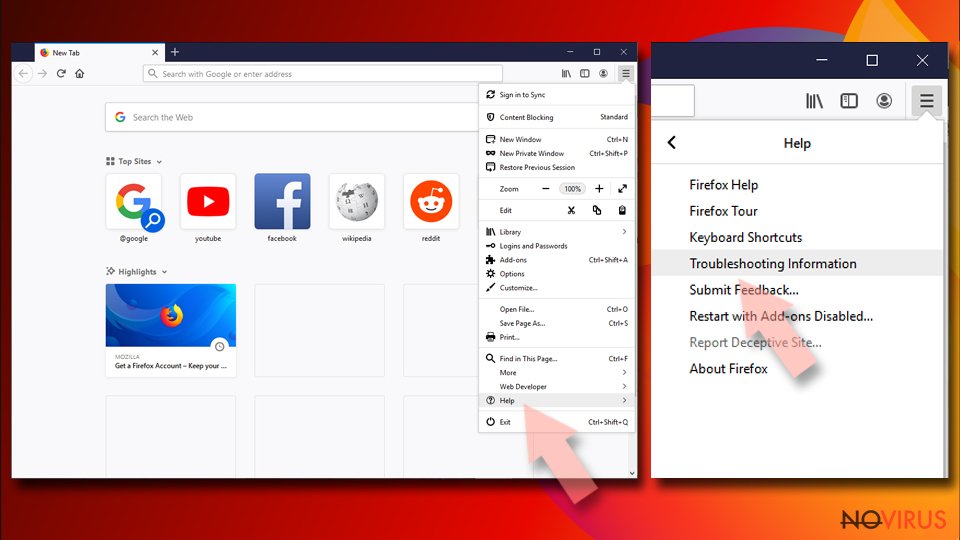
- Locate Give Firefox a tune-up section, click on Refresh Firefox…
- Confirm the action by pressing on Refresh Firefox on the pop-up.
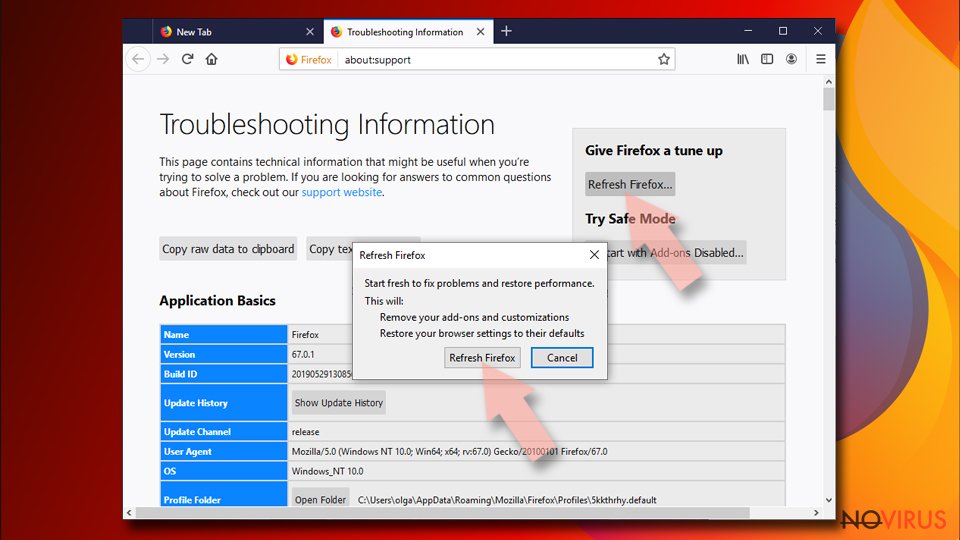
Chrome browser reset
Find and remove suspicious extensions from Google Chrome:
- In Google Chrome, open the Menu by clicking three vertical dots at the top-right corner.
- Select More tools > Extensions.
- Once the window opens, you will see all the installed extensions.
- Find any suspicious add-ons related to any PUP.
- Uninstall them by clicking Remove.
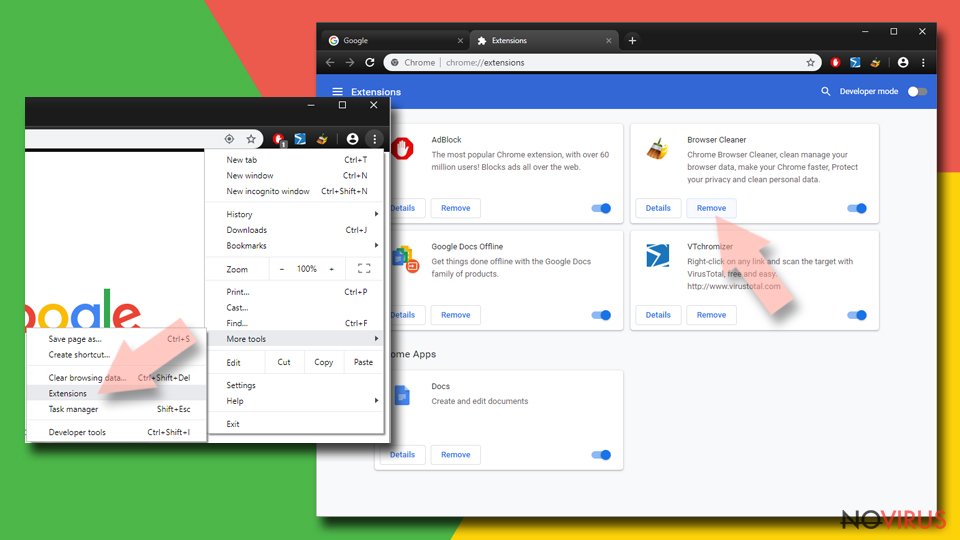
Clear cache and web data from Chrome:
- Click the Menu and select Settings.
- Find Privacy and security section.
- Choose Clear browsing data.
- Select Browsing history.
- Cookies and other site data, also Cached images and files.
- Click Clear data.
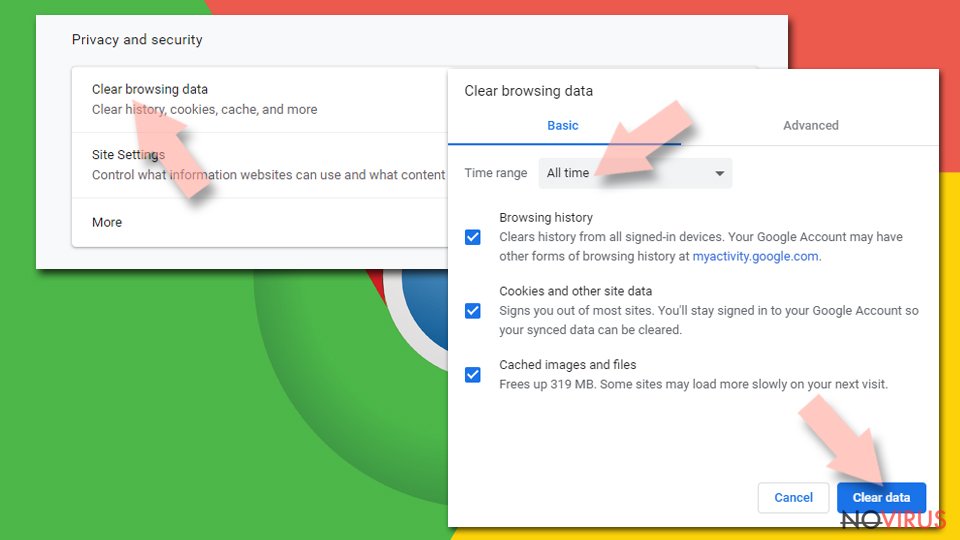
Alter settings of the homepage:
- Go to the menu and choose Settings.
- Find odd entries in the On startup section.
- Click on Open a specific or set of pages.
- Then click on three dots and look for the Remove option.
Reset Google Chrome fully:
You might need to reset Google Chrome and properly eliminate all the unwanted components:
- Go to Chrome Settings.
- Once there, scroll down to expand Advanced section.
- Scroll down to choose Reset and clean up.
- Click Restore settings to their original defaults.
- Click Reset settings again.
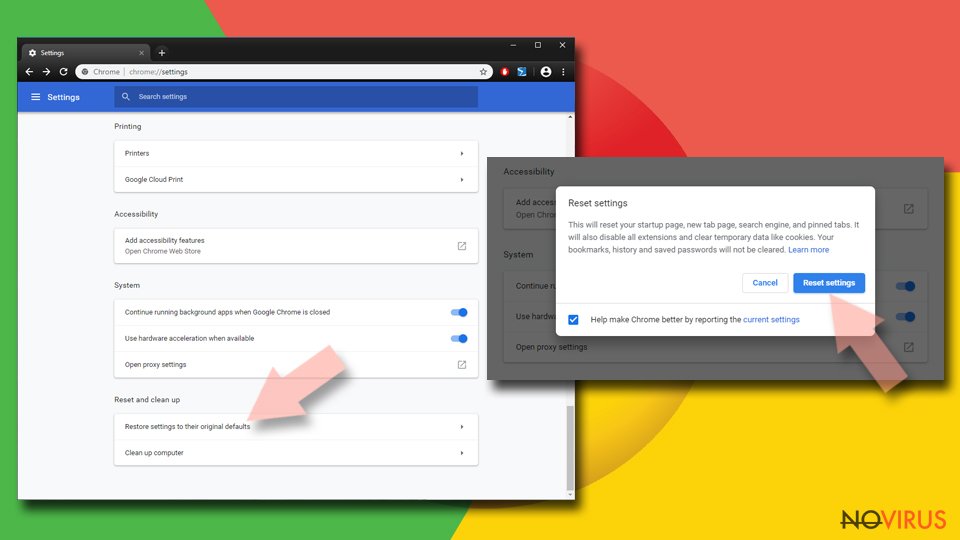
Delete Yoursites123 from Safari
Get rid of questionable extensions from Safari:
- Click Safari.
- Then go to Preferences…
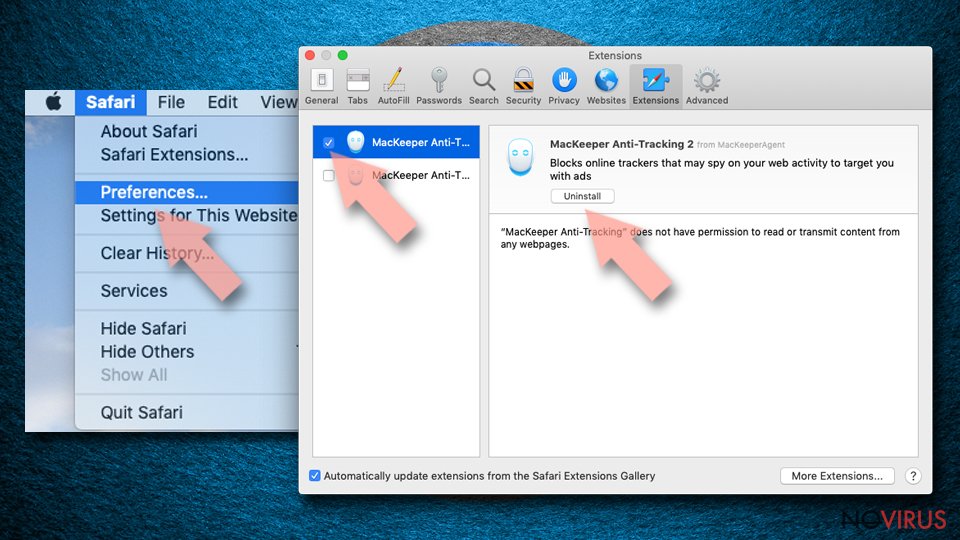
- Choose Extensions on the menu.
- Select the unwanted extension and then pick Uninstall.
Clear cookies from Safari:
- Click Safari.
- Choose Clear History…
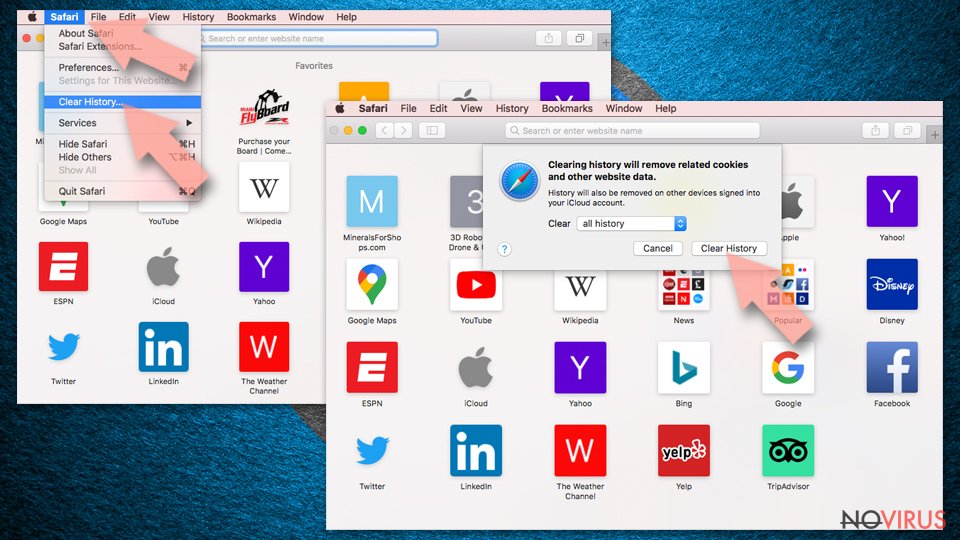
- From the drop-down menu under Clear, find and pick all history.
- Confirm with Clear History.
Reset Safari fully:
- Click Safari and then Preferences…
- Choose the Advanced tab.
- Tick the Show Develop menu in the menu bar.
- From the menu bar, click Develop.
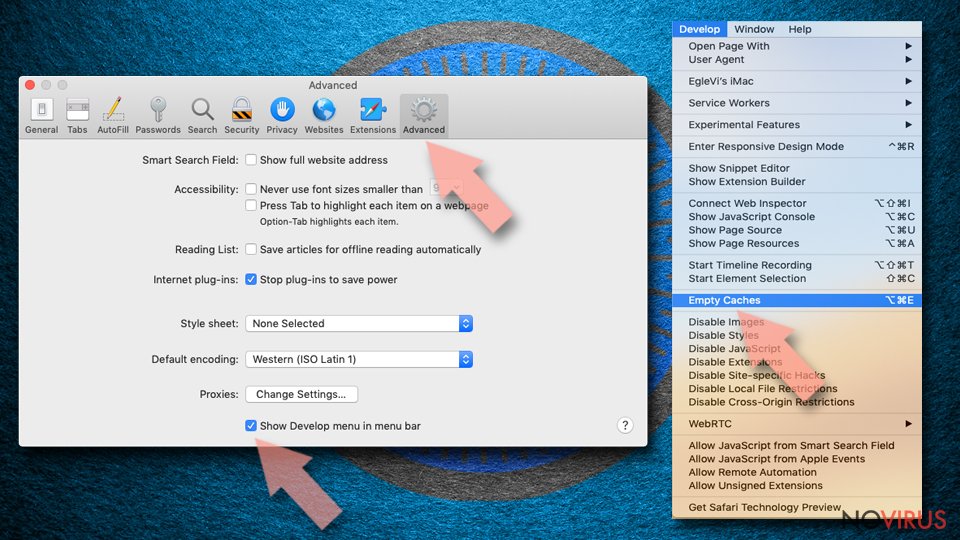
- Then select Empty Caches.
Even if you have completed all the steps above, we still strongly recommend you to scan your computer system with a powerful anti-malware software. It is advisable to do that because an automatic malware removal tool can detect and delete all remains of Yoursites123, for instance, its registry keys. The anti-malware program can help you to easily detect and eliminate possibly dangerous software and malicious viruses in an easy way. You can use any of our top-rated malware removal programs: FortectIntego, SpyHunter 5Combo Cleaner or Malwarebytes.
How to prevent from getting browser hijacker
A proper web browser and VPN tool can guarantee better safety
As online spying becomes an increasing problem, people are becoming more interested in how to protect their privacy. One way to increase your online security is to choose the most secure and private web browser. But if you want complete anonymity and security when surfing the web, you need Private Internet Access VPN service. This tool successfully reroutes traffic across different servers, so your IP address and location remain protected. It is also important that this tool is based on a strict no-log policy, so no data is collected and cannot be leaked or made available to first or third parties. If you want to feel safe on the internet, a combination of a secure web browser and a Private Internet Access VPN will help you.
Recover files damaged by a dangerous malware attack
Despite the fact that there are various circumstances that can cause data to be lost on a system, including accidental deletion, the most common reason people lose photos, documents, videos, and other important data is the infection of malware.
Some malicious programs can delete files and prevent the software from running smoothly. However, there is a greater threat from the dangerous viruses that can encrypt documents, system files, and images. Ransomware-type viruses focus on encrypting data and restricting users’ access to files, so you can permanently lose personal data when you download such a virus to your computer.
The ability to unlock encrypted files is very limited, but some programs have a data recovery feature. In some cases, the Data Recovery Pro program can help recover at least some of the data that has been locked by a virus or other cyber infection.
